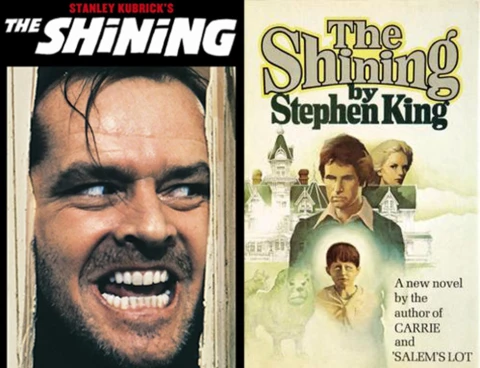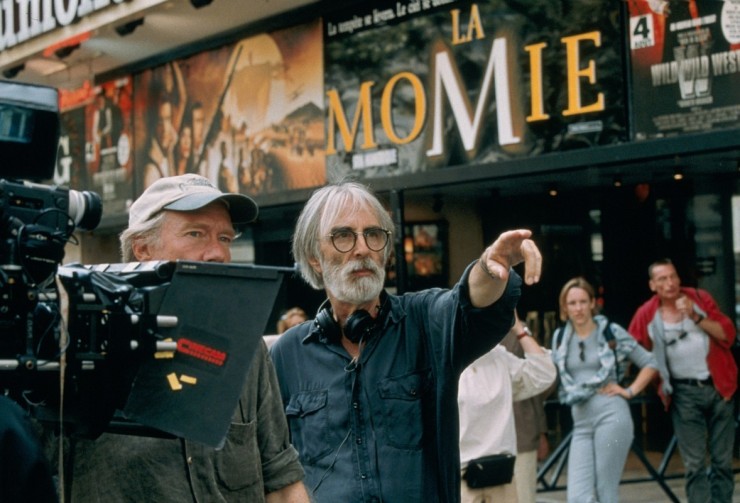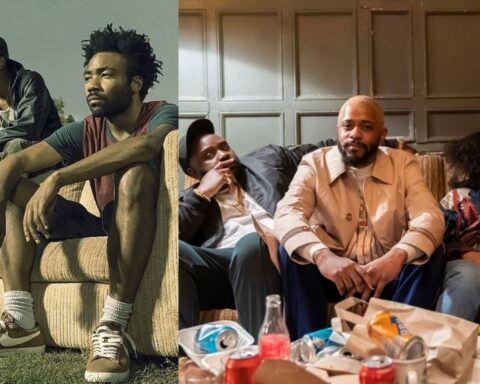Stephen King’s work concentrates on psychological terror, almost pushing us away from the jump scares and gore to present us with a world where we fear our own imaginations. Sure, there are times when we feel like we’re watching a conventional horror movie or are too terrified to turn the page of his novel, but more often than not, we’re caught in our own brains and the fear that resides within them.
After getting a job as an off-season caretaker at Colorado’s remote Overlook Hotel, Jack Torrance, an aspiring playwright and recovering alcoholic, drags his wife, Wendy, and his brilliant son, Danny, up snow-capped Colorado’s secluded Overlook Hotel. As the grand hotel closes for the season, the manager gives Jack a tour, and the facility’s chef, the elderly Mr. Hallorann, has a fascinating conversation with Danny about a rare psychic gift known as “The Shining,” making sure to warn him about the hotel’s abandoned rooms, particularly Room 237, which is off-limits. However, rather than breaking out of his creative rut, Jack gradually loses his sanity, stuck in an unforgiving environment of apparently endless snowstorms and a massive silent prison filled with weird occurrences and scary visions. The constant voices inside Jack’s head now demand that he make a sacrifice. Is Jack capable of murder?
The easiest example of this is in The Shining, where we’re so engrossed in Jack’s terror that we almost forget about Danny’s terror. The Honest Trailer for The Shining highlights Stanley Kubrick’s use of continuous shots, the differences between the novel and the film adaptation, and the film’s amusing details. The fear, on the other hand, is not mentioned.
I’m not sure what it is about these stories (particularly The Shining), but there’s a level of doubt that creeps into your head as you’re watching or reading them. For me, it’s not the blood or the jumps that get me with this or Pet Sematary, but rather the struggle these folks go through and the suffering that the terrors around them inflict on their psyche.
To take a break from The Shining, consider a story like Secret Window, which features the same kind of psychological warfare. The story follows Mort Rainey, a Maine writer, and is based on the Stephen King story Secret Window, Secret Garden. When he’s questioned by John Shooter, who says he’s plagiarizing his work, the two find themselves in a mental war over their works. What is the issue? Mort’s mind created John Shooter, who he hardly recognizes as a part of his own brain.
Stephen King’s greatness, in my opinion, stems from that level of fear. It’s not about what can keep you up at night. It’s all about what you remember psychologically. Other films and tales are not framed in the same way as The Shining, as the Honest Trailer points out. There was no enormous monster chasing them down, no scene of someone being ripped apart and thrown into a blender.
Stephen King is a master at instilling fear in us long after we’ve finished reading his writing, which is astonishing. It also helps that we all enjoy immersing ourselves in his novels and films throughout the Halloween season. At the very least, we’ll be able to rewatch The Shining and then see Doctor Sleep to keep our horror of the Overlook Hotel alive this time.
His best work is the ones that really make you feel for the characters not the jump scares. This is why I’m not sure whether Stanley Kubrick was the best person to interpret a Stephen King work (the movie’s good points notwithstanding). Say what you want about Stephen King, but he’s a very empathetic writer. He’s good at getting into his characters’ heads and making you understand their feelings and motivations. In my opinion, Kubrick’s style isn’t very empathetic–it seems to me rather cold and detached, more interested in ideas than making us feel for characters.
Kubrick’s choice to shoot so much of the movie from Danny’s perspective is brilliantly executed and makes this an emotionally accessible film for me. King never really found a way into Danny’s head, kids that age just aren’t self-aware in a way that can be put into words, he had to let us know more indirectly with “Tony” and Hallorann and the narrator telling us about Danny. One shot of Danny on his Big Wheel.
In comparison to the movie, the book was much better. It made more sense because it followed more of a chronological order. The movie felt a little all over the place. Although it was interesting to see the characters in the movie versus my imagination, I loved the book so much more. I could just really see the twisted mind of Stephen King without the effect of Hollywood.
I have to say that Jack Nicholson (Jack Torrance) and Danny Lloyd (Danny Torrance) did a remarkable job with their acting. Their acting brought the creepiness to life. It gives me the shivers just thinking about Jack Nicholson’s iconic “Here’s Johnny” scene, which actually was not explicitly said in the book.
However, Shelley Duvall (Wendy Torrance)’s acting was not exactly what I had hoped. Her character was much more relevant in the movie than in the book. I loved the role she played in the book, but in the movie, I was hoping for her to sell the part of “mother” more. I felt her presence and the constant worry that she had for Danny far more in the movie than the book. I was a little disappointed with Duvall’s execution.
One of my favorite scenes that really brought the twistedness of the “The Shining” to life in both the book and the movie was the bathroom scene with the woman. I don’t want to give too much away, but it definitely was well executed in the movie and was a pivotal point of the introduction for “The Shining.”







